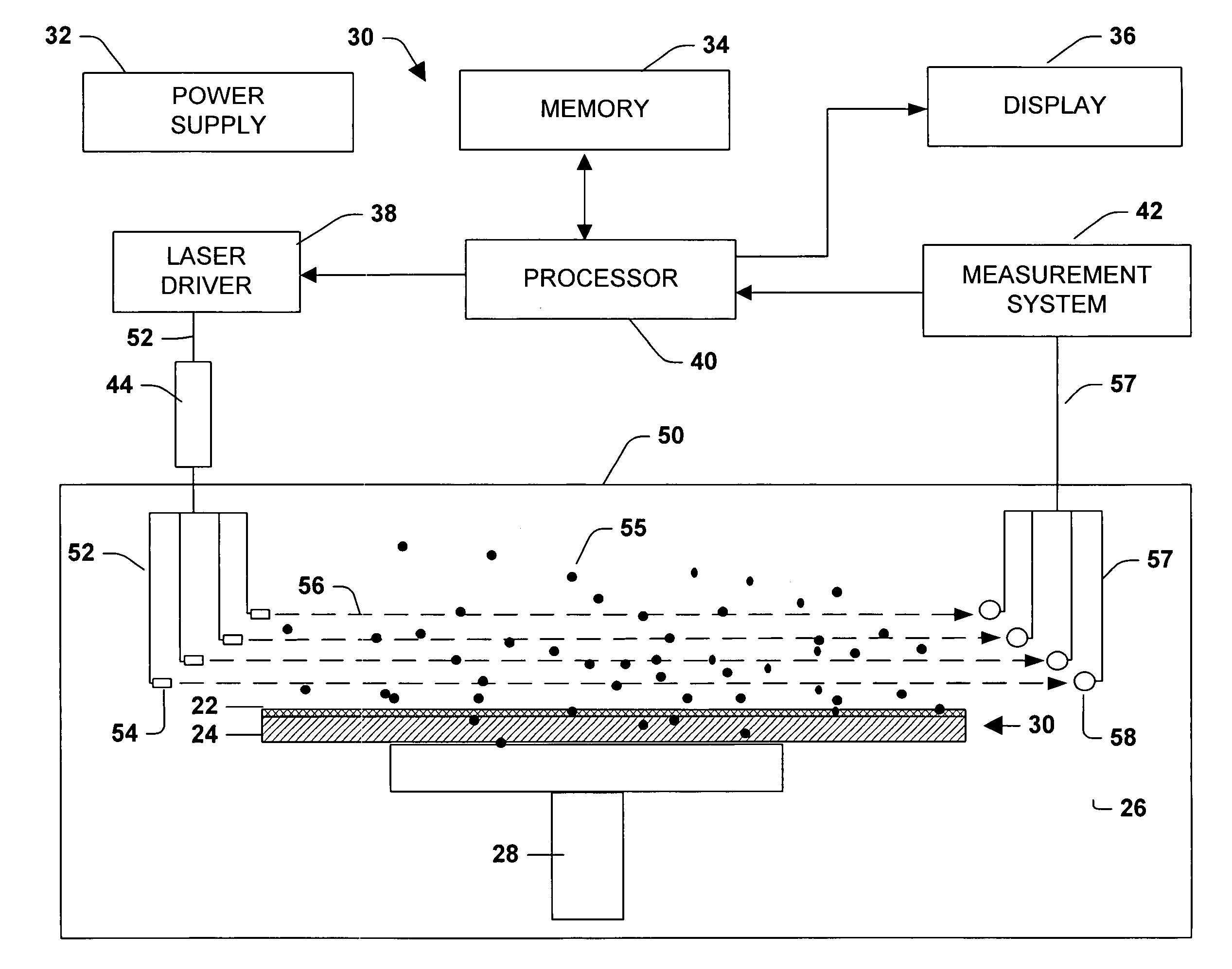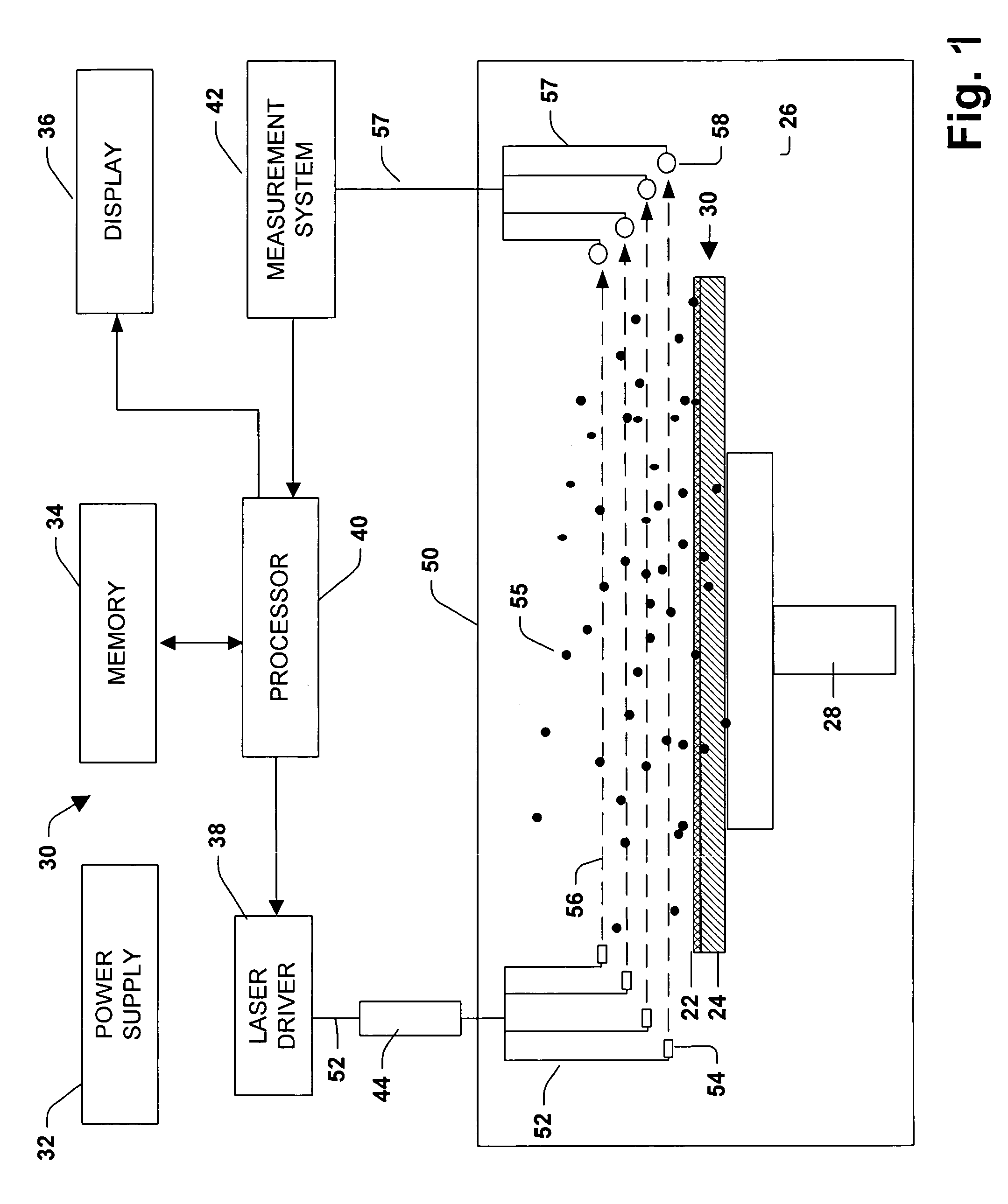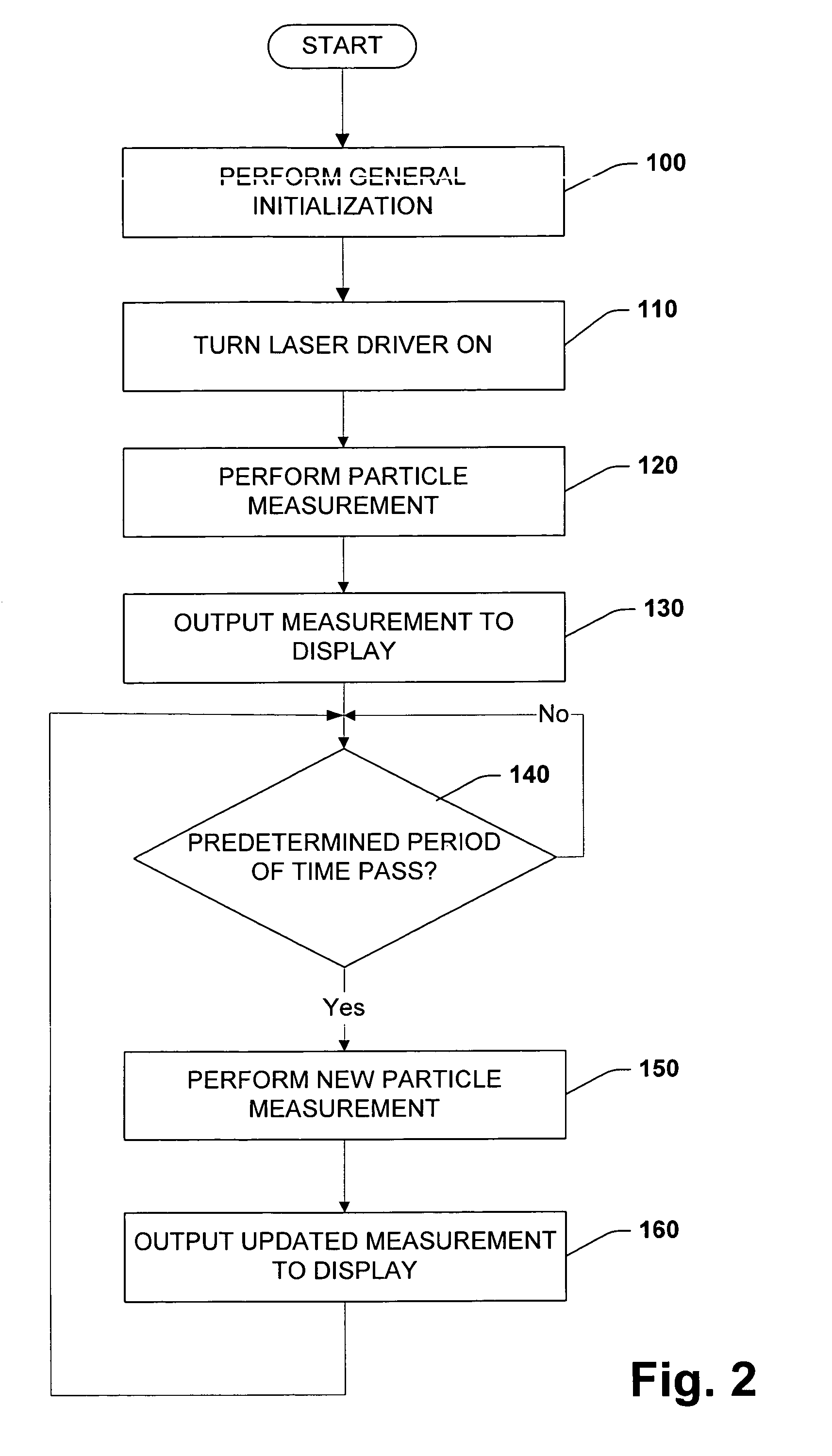In situ particle monitoring for defect reduction
a particle monitoring and defect reduction technology, applied in semiconductor/solid-state device testing/measurement, optical investigation of flaws/contamination, instruments, etc., can solve problems such as contaminating the thin photoresist film on the wafer, defects in the wafer, and virtually useless wafers, so as to remove excessive contaminates
- Summary
- Abstract
- Description
- Claims
- Application Information
AI Technical Summary
Benefits of technology
Problems solved by technology
Method used
Image
Examples
Embodiment Construction
[0022]The present invention will now be described with reference to the drawings, wherein like reference numerals are used to refer to like refer to like elements throughout. The present invention will be described with reference to a system and method for monitoring and controlling the contaminant particle count contained in an aerosol during a photoresist coating and / or development process of a semiconductor. The following detailed description is of the best modes presently contemplated by the inventors for practicing the invention. It should be understood that the description of these preferred embodiments are merely illustrative and that they should not be taken in a limiting sense.
[0023]Referring initially to FIG. 1, a system 30 for applying uniformly a photoresist material layer 22 on a substrate 24 to form a wafer 20 is shown. The substrate 24 is vacuum held onto a rotating chuck 26, which is spin rotated by a shaft 28 driven by a motor (not shown). The wafer 20, the rotating...
PUM
| Property | Measurement | Unit |
|---|---|---|
| heights | aaaaa | aaaaa |
| light transmissions | aaaaa | aaaaa |
| light intensity | aaaaa | aaaaa |
Abstract
Description
Claims
Application Information
 Login to View More
Login to View More - R&D
- Intellectual Property
- Life Sciences
- Materials
- Tech Scout
- Unparalleled Data Quality
- Higher Quality Content
- 60% Fewer Hallucinations
Browse by: Latest US Patents, China's latest patents, Technical Efficacy Thesaurus, Application Domain, Technology Topic, Popular Technical Reports.
© 2025 PatSnap. All rights reserved.Legal|Privacy policy|Modern Slavery Act Transparency Statement|Sitemap|About US| Contact US: help@patsnap.com



